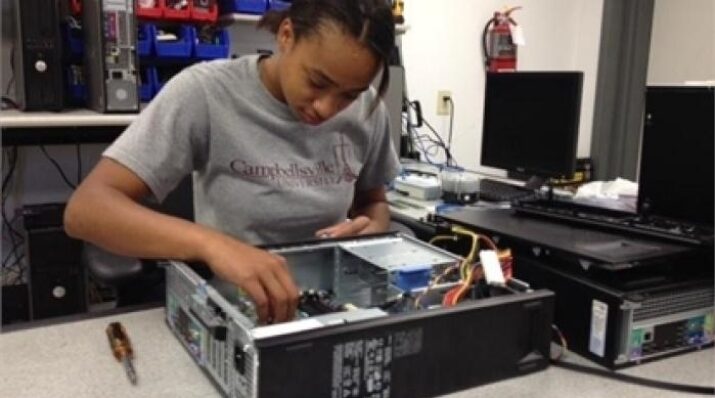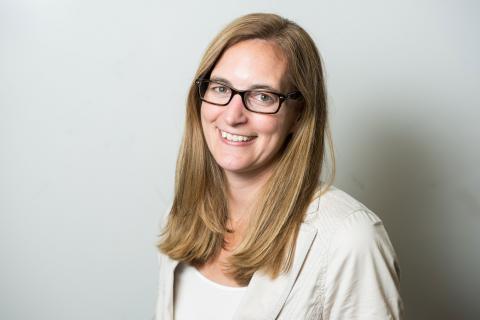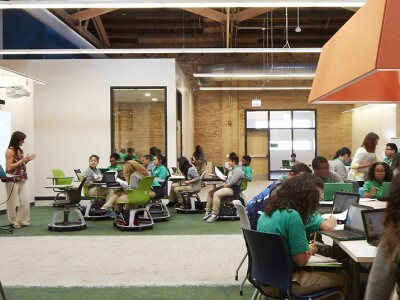Competency-Based Learning in K-12 Schools
Topics

We’ve all had the experience of truly purposeful, authentic learning and know how valuable it is. Educators are taking the best of what we know about learning, student support, effective instruction, and interpersonal skill-building to completely reimagine schools so that students experience that kind of purposeful learning all day, every day.
Find out how NGLC breakthrough schools adopt the design principle of Self-Pacing and Mastery-Based Credit so students move at their own optimal pace and receive credit when they demonstrate mastery.
Self-Pacing and Mastery-Based Credit is one of NGLC’s seven design principles for breakthrough schools. With this principle, breakthrough schools enable students to move at their own optimal pace and receive credit when they demonstrate mastery of the material. The goal is to personalize learning so that all students are well-prepared for college, career, and life.
How do NGLC grant recipients adopt this design principle in their school models? In the profiles of K-12 breakthrough schools, you can view the key features of each model to get a quick sense of the elements most central to their model. Competency-based learning is listed as a key feature of the following grant recipients:
- Cornerstone Charter School’s Cornerstone Charter Health High School
- Danville Independent Schools’ Bate Middle School and Danville High School
- Education Achievement Authority of Michigan’s Nolan Elementary-Middle School
- Fayette County Public Schools’ STEAM Academy
- Great Oaks Foundation’s Great Oaks Charter School of New York City
- Horry County Schools’ Whittemore Park Middle School
- Matchbook Learning
- Schools For the Future’s SFF Detroit
- Summit Public Schools’ Summit Denali
- Virtual Learning Academy Charter School’s VLACS Aspire
- The Workshop School
The adoption of this design principle varies. As you browse through the profiles of these grantees, take note of the different ways in which the schools set the boundaries within which students will progress at their own pace and earn credit as they master the material.
In some schools, students move at their own pace within tightly specified boundaries—within a specific activity, within a course curriculum, or perhaps within a grade level. The boundaries create a starting point and an ending point for self-pacing through a particular curriculum and set of standards, and students earn credit for making progress within that bounded set of competencies.
In other schools, students move at their own pace seemingly without boundaries—there are no grade levels in the school, projects drive the learning and students master content as they work on projects, or students can choose how they will demonstrate mastery outside of any specific curriculum. I use the word seemingly because the programs are not completely unbounded. Students must meet state standards and must demonstrate a predetermined level of mastery before they can move on. Some schools establish minimum requirements for self-pacing—so a student who doesn’t like history, for example, can’t avoid the subject and must continue to make progress toward mastery.
Project-Based Learning: For examples of school models that integrate competency-based learning with project-based learning as key features of their model, see the profiles of Danville (6-12, district), Summit (6-12, charter), and Workshop (9-12, district).
Social-Emotional Learning: Schools that emphasize social-emotional learning in a competency-based model include Schools for the Future (8-12, charter) and Whittemore Park in Horry County (6-8, district).
Next Gen Staffing: For competency-based learning models that deviate from traditional one-teacher-per-classroom staffing approaches, see the profiles for Cornerstone (9-12, charter) and Great Oaks (6-12, charter). For competency-based models that emphasize professional development for teaching in a next gen learning environment, see EAA’s Nolan (K-8, district) and Matchbook Learning (K-8, district partner).
No Grade Levels or Courses: Instead of a course-based curriculum, the curriculum of VLACS Aspire (5-12, charter) is framed around a map of required competencies. Students may master each competency through any number of learning opportunities, many of them experiential. Cornerstone (9-12, charter) forgoes traditional high school grade levels in favor of a continuum from “Beginner” to “Professional.”
Learn More
- Competency-Based Education Approaches in K-12 Schools, Part One - A round up of tools and resources focused on competency-based education to help practitioners personalize learning for students, featuring Philadelphia School District's Building 21.
- Competency-Based Education Approaches in K-12 Schools, Part Two - In this second post on schools’ approaches to competency-based education, author Stefanie Blouin highlights one NGLC grantee that has committed its model to a larger goal: USC Hybrid High.
- NGLC Schools Take on Competency-Based Learning - An update on CBE in NGLC schools, exploring competency-based learning at eight additional NGLC schools.




